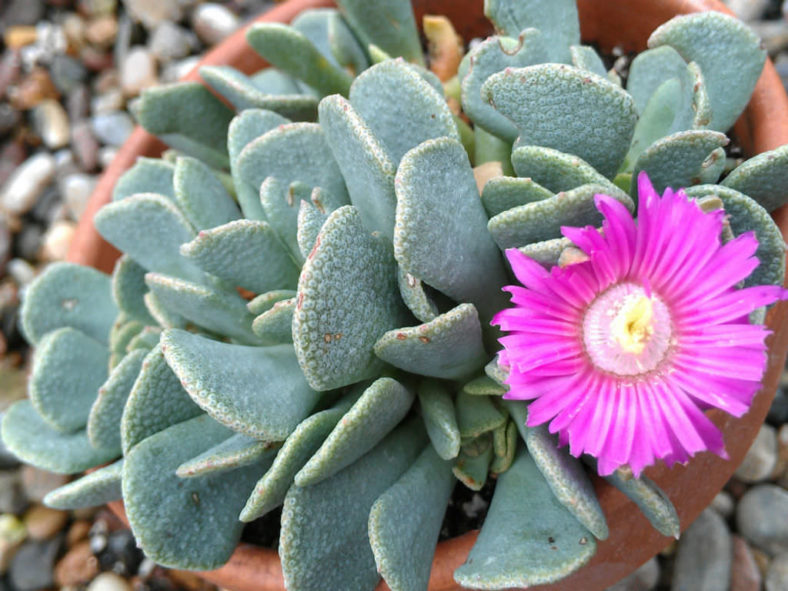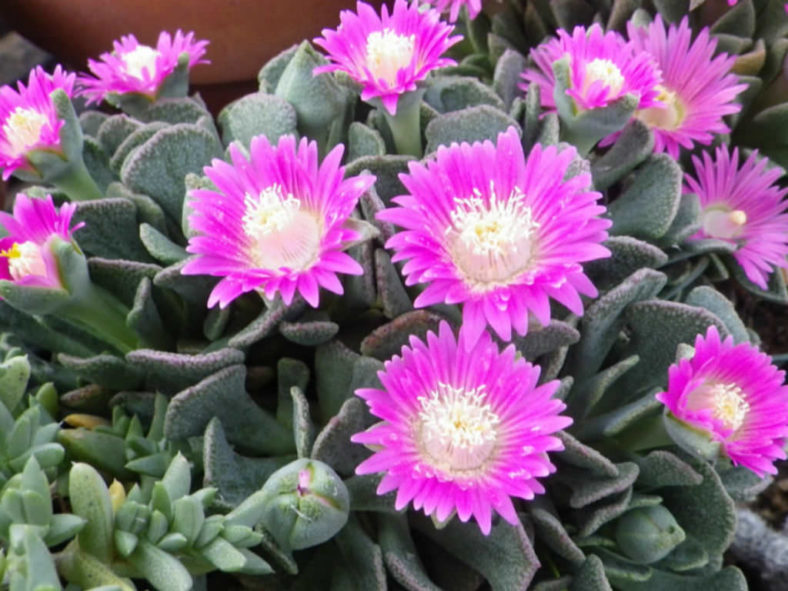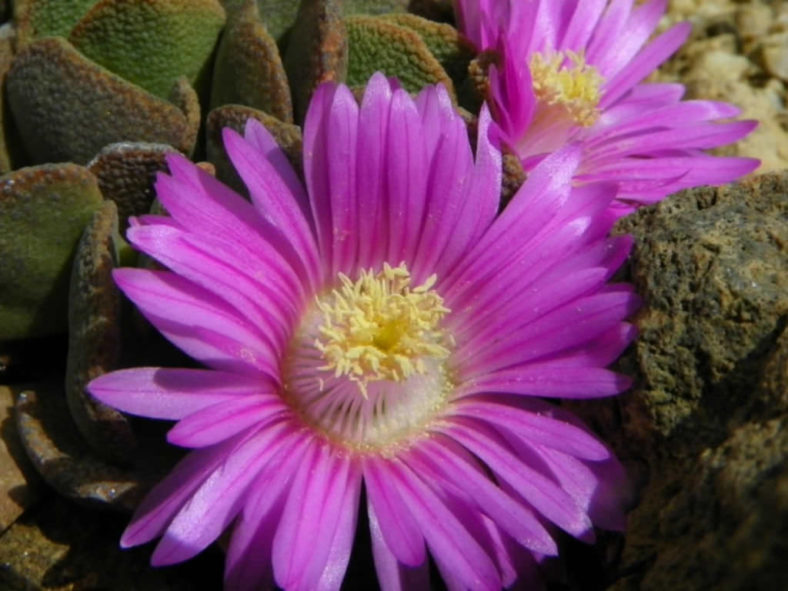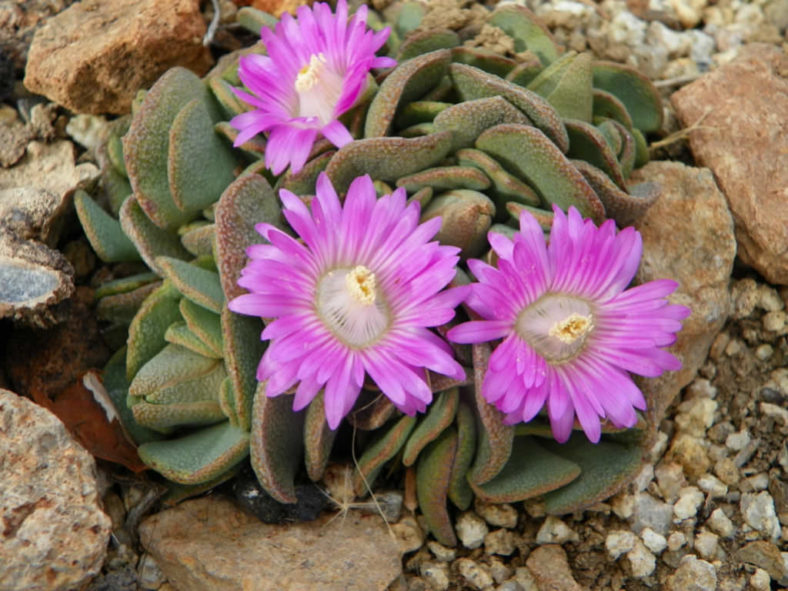Scientific Name
Aloinopsis spathulata (Thunb.) L.Bolus
Common Name(s)
Hardy Living Stone
Synonym(s)
Mesembryanthemum spathulatum, Nananthus spathulatus, Titanopsis spathulata
Scientific Classification
Family: Aizoaceae
Subfamily: Ruschioideae
Tribe: Ruschieae
Genus: Aloinopsis
Etymology
The specific epithet "spathulata" (pronounced "spath-yoo-LAY-tuh") means "spatulate, spatula-like" and refers to the shape of the leaves of this species.
Origin
Aloinopsis spathulata is native to South Africa.
Description
Aloinopsis spathulata is a charming, mat-forming succulent with blue-grey, spoon-shaped, tightly held leaves with prominent warts. It can grow up to 2 inches (5 cm) tall and spread 12 inches (30 cm).
The flowers are bright pink, aster-like, and hover just above the foliage in early spring.

Hardiness
USDA hardiness zones 5b to 9b: from -15°F (-26.1°C) to 30°F (-1.1°C).
How to Grow and Care
These plants are popular among collectors. They prefer a very porous potting mix to increase drainage. Aloinopsis are winter growers and need plenty of light. Most are somewhat to extremely cold-hardy and bloom in the winter.
Aloinopsis can be cultivated in the ground or a container. They will grow in the cooler parts of the year and flower in winter if it gets good light. Direct sunlight is essential for blooming well. Aloinopsis is probably dormant in summer, so it is usually recommended not to water much in summer. Do not be surprised if they do not grow then, but although Aloinopsis are better treated as winter growers, they will grow anyway in summer if given water. They should be fertilized only once during the growing season with a balanced fertilizer.
They are propagated by seed or division. Unfortunately, Aloinopsis is prone to red spider mites and root rot.
Learn more at How to Grow and Care for Aloinopsis.
Links
- Back to genus Aloinopsis
- Succupedia: Browse succulents by Scientific Name, Common Name, Genus, Family, USDA Hardiness Zone, Origin, or cacti by Genus
Photo Gallery
Click on a photo to see a larger version.


